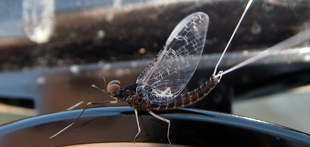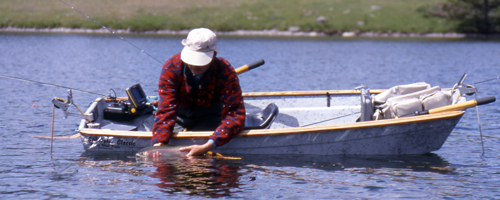|
| |
|
|
Print Article
Article: Fly Fishing in Stillwaters
10 Essential Tips for Great Success
There are a lot of lakes in BC, in fact, over 20,000 of them, varying from pond size to those having hundreds of miles of shoreline. It is safe to say that there are a few too many to ever fish in one's lifetime. Some of the best fishing for trout and char occurs in the smaller lakes or stillwaters, those under about 1000 acres in surface area. These smaller water bodies, depending on geographic location can be quite productive in terms of their ability to grow game fish. The majority of lakes in the province support wild populations of rainbow trout and char. Many of these are located in the northern half of the province. The Freshwater Fisheries Society of BC stocks about 900 lakes each year with rainbow, cutthroat, kokanee and brook trout. The majority of these stocked waters are situated in the southern half of the province. The most productive lakes are located in the interior regions of the province in a band stretching from the southern Okanagan to the Peace River plateau.
Becoming a proficient fly fisher on these productive lakes means spending the time to learn how these ecosystems function. This includes learning the structure of the lake, what food sources are present, the preferred habitat of the trout, char and other game fish species, and the best times of the year to catch these fish. Lakes are much more secretive in offering hints as to where the trout are going to be found as compared to rivers and streams. There are no currents to dictate where fish can live or that determine prime aquatic invertebrate habitat. For these and other reasons, many fly fishers lack the confidence when fishing lakes. We often refer to this as the black hole syndrome.
Understanding lakes can be like a puzzle, where we solve small pieces and eventually have the complete picture. What follows are 10 tips to help put that puzzle together which ultimately translates into more success and fun on the almost limitless number of lakes in British Columbia. Of course, these tips will have application to productive stillwaters found anywhere.
-
Where the trout live
Lakes can be broken down into 3 distinct areas or habitat zones. The shoal or littoral zone is the shallow water area of the lake, that water from the shoreline out to about the 25 ft depth zone. This also coincides with the depth of maximum sunlight penetration which is a key factor in determining overall lake productivity. The shoal is where the vegetation grows and where the majority of aquatic food sources are found. The shoal is the grocery store and the trout and char come onto the shoal for food. It is the most important area of the lake when it comes to catching trout. The drop-off zone is where the edge of the shoal zone transitions to the deeper parts of the lake. The slope of the drop-off can be gradual or quite steep. Drop-offs are also the maximum point of green plant growth so are also a perfect fish feeding area as well as offering refuge from the warmer shallow waters during the hot summer months. This habitat zone is relatively short or narrow as the water quickly deepens to the deepwater zone of a water body. The deepwater zone supports the least amount of macro invertebrate (insects and other larger food sources) habitat. However, in many lakes the deepwater or mid-lake zone supports fairly prolific chironomid populations and subsequent emergences.
-
Whatch the birds
Aquatic insect hatches can often be confined to certain shoals or specific locations within a lake. Often, on larger water bodies, a certain colour chironomid can be emerging in one bay and a totally different size and colour pupa emerging in another bay. Birds, such as swallows, terns, gulls, and night hawks, find emerging chironomids, mayflies, caddisflies as well as other hatching insects much more quickly that we can. Binoculars are valuable in seeing avian activity and in particular when fishing larger lakes.
-
Look on and into the water
Carry a small aquarium net to capture pupae, nymphs, emergers and adult insects so you can match fly patterns to size and color. Place the specimens in a vial or white dish to get a better idea of color and to watch the actual emergence process. Surface and sub-surface feeding trout leave distinct riseforms that provide clues to the angler as to what insect stage they are selecting. Trout feeding on minnows often show chasing/slashing rises as they work through the school of baitfish. And finally, polarized sunglasses allow you to see better beneath the surface to spot shoals, drop-offs, spring areas, and bugs.
-
Know your insects and other food sources
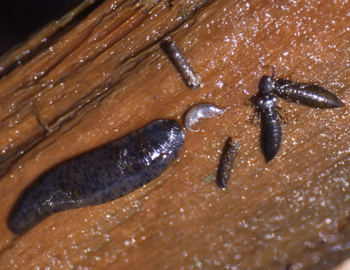
Learn to recognize the major aquatic invertebrate food sources that make up a large percentage of the diet of trout in many stillwaters such as chironomids (midges), mayflies, caddisflies, damselflies, dragonflies, waterboatman, backswimmers, scuds, leeches, snails, and forage fish. Equally important, have a sound understanding of their individual life cycles and habitat requirements. Getting to know a particular lake or group of lakes translates into learning which food sources are present and knowing the emergence sequences peculiar to those individual waters. Many good reference books cover identification, life history and distribution of the most common stillwater invertebrates. These insects' life cycles and emergence patterns are similar regardless of where a lake is geographically located; chironomids from a lake in the Northwest Territories emerge the same way as those in a nutrient rich stillwaters of a productive lake on the north island of New Zealand.
-
Water temperature
Water temperature influences the hatches, and each insect order has preferred temperature ranges for development and emergence. Insect hatches follow a seasonal sequence that typically begins with midges, followed by mayflies, then damselflies, caddisflies and lastly dragonflies. The most intense emergences typically occur when surface water temperatures range between 50° F and 65° F. It is possible to see multiple insect orders and species emerging at the same time which can be confusing to both angler and fish. Anglers must rely on their knowledge of individual insect emergence strategies and be prepared to present all options to those feeding fish.
-
Basic fly lines
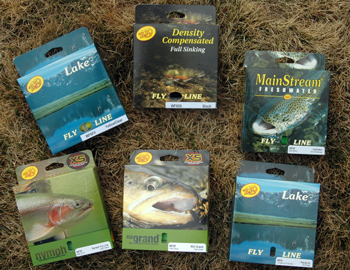
Stillwater anglers should be prepared to present flies from the surface to depths of over 40 feet. An understanding of individual insect order life cycles will dictate what depth zones may be fished when that particular food source is emerging or is readily available. Floating fly lines cover the shoal zone, water between 2 to 20 feet in depth, and are ideal for presenting floating, emerging, pupal, and nymphal imitations. A slow or intermediate sinking is a good line for fishing the deeper parts of the shoal such as water between 10 and 20 feet deep. This line allows slow presentation of pupal and nymphal patterns while ascending at a gradual angle towards the surface. A fast or extra fast sinking line provides good coverage of the 20 to 40 foot depth range and is useful for fishing dragonfly nymphs, leeches and shrimp along the deeper edges of drop-offs or retrieving flies up the face of the drop-off.
-
Fly selection
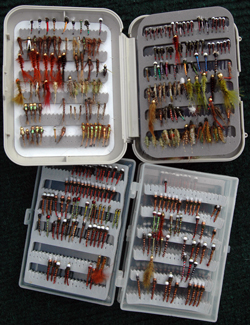
Do some homework to learn what insects and other food sources are in the stillwaters you will be fishing. Local fly shops, fly fishing clubs, and regional fishing guidebooks are good sources for this information. The ideal fly box will have both generic imitations of food sources plus some refined patterns that more closely imitate the various life stages of insects found specifically in those waters. There are many good commercially tied fly patterns covering all the important food sources of trout and char in lakes. It is no longer a disadvantage to not being a fly tier. Basic sub-surface patterns that should be in your stillwater fly box include:
- leeches in black, maroon and dark green and with and without beadheads
- dragonfly and damselfly nymphs in light and dark olive body colours
- shrimp or scud patterns in light olive to dark olive
- mayfly nymphs in dark brown to tan
- caddis pupae in medium green to brown body colours
- a selection of chironomid pupa: chironomid pupal pattern colours include black, brown, green and maroon with abdominal ribbings of copper, red-copper, silver or gold wire
- a few dry flies such as Tom Thumbs to imitate the adult caddis, Parachute Adams for adult mayflies, and the Lady McConnell for imitating the adult chironomid
-
Proper boat setup
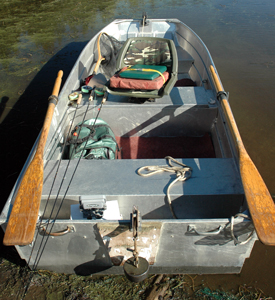
A stable flat-bottomed boat or pram is often the most effective way to fish the smaller trout lakes. The biggest advantage to a hard-bottomed craft is that one can stand up and look out over and into the water. This is a particular advantage when fishing clear water lakes as individual fish or schools of fish can be spotted and observed as to feeding behaviour and movement patterns. Pontoon boats are another good choice as the angler sits high enough in these craft to see into the water. Some pontoon boat manufacturers are now offering standing platforms. Both boats and pontoon boats can be moved from area to area much faster than a float tube. This can be critical when trying to locate specific insect emergences when fishing a larger water body. Hatches can occur at one end or bay of a lake and be non-existent in another location.
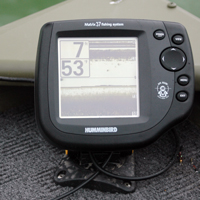
Another essential tool for the stillwater fly fisher is a depth sounder or fish finder. We need to know the depth we are fishing so that flies can be presented in the right depth zone. Depth sounders are relatively inexpensive yet highly sensitive instruments. Things to look for in a sounder include the transducer cone angle which should be at least 50° wide or wider. This allows greater coverage of the bottom structure under the boat and thus increases the chance of marking fish. Remember the majority of fly fishing done in productive lakes is in water less than about 8 meters in depth and often in less than 5 meters. Consider the power source of the sounder as some units can go through smaller sized batteries at a very fast rate. Many sounder units come wired to run off a large 12-volt battery such as the one used to power your electric motor.
Fishing out of a boat can be noisy, particularly if it is made out of aluminum. Reduce the chances of scaring fish by fitting outdoor carpeting over the floor of the boat. Always keep in mind sound travels fast in water and trout have sensitive hearing systems.
-
Double anchoring
When fishing out of a boat it is critical to have anchors out both bow and stern. This is especially important if there are 2 people fishing out of the same craft. Double anchoring prevents the boat from swinging back and forth when the wind is constantly changing direction. A stationary boat allows the best control of fly lines and retrieves. It is important to have as straight a line connection between the fly rod, fly line, leader and fly as possible so that even the softest bite can be detected. Simple anchor control pulley systems make lifting, storing and re-setting anchors easy while at the same time requiring little movement within the boat.
-
Learn about peferred food sources
Trout that become focused on a few dominant food sources in a lake can often become difficult to catch. Small nutrient rich lakes often support immense chironomid and scud populations. Anglers that have consistent success in these waters have learned the details of the life cycles and habitat preferences of these preferred food sources. For instance, when chironomid pupae suspend just inches off the lake bottom, often for several days, as they complete the transition from the larval to pupal stage, there can be great fishing even though there is no sign of any emergence at the surface.
When searching out a new lake, slowly troll or drift and cast around the basin while getting a good look at shoals, drop-offs, weed beds and perhaps sunken islands. Dragonfly nymphs and leeches are always good searching patterns. Both invertebrates are common inhabitants of lakes and both are big food items. Don't be afraid to try flashy or bright patterns like bead headed woolly buggers and be prepared to vary speed and direction frequently when either trolling or retrieving a cast fly.
|
|
|
|
|
|


